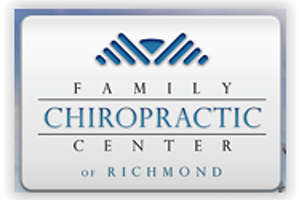What is Cervicogenic Headache and How is it Treated by Chiropractic
- Dr. Eric Carlsen
- Jun 8, 2021
- 2 min read

Cervicogenic headache (CGH) occurs when pain is referred from a specific source in the neck up to the head. This pain is commonly a steady ache or dull feeling, but sometimes the pain intensity can worsen. CGH symptoms are usually side-locked, which means they occur on one side of the neck, head, and/or face.
Cervicogenic Headache Pain
CGH usually starts as intermittent pain and may progress to become a continuous pain.
The common features of CGH include:
Pain originating at the back of the neck and radiating along the forehead, the area around the eye, temple, and ear
Pain along the shoulder and arm on the same side
Reduced flexibility of the neck
Eye swelling and blurriness of vision may occur on the affected side in some cases
Pain almost always affects the same side of the neck and head, but in uncommon cases, both sides may be affected.
How a Neck Problem Can Cause Cervicogenic Headache
In the upper cervical spine region, the trigeminocervical nucleus is an area of convergence of sensory nerve fibers originating from both the trigeminal nerve and the upper spinal nerves. The trigeminal nerve is responsible for pain sensation in the face including the top of the head, forehead, eye, and temple area. When a pain sensation from a cause of CGH is sensed by the upper spinal nerves, it gets transferred to the trigeminal nerve fibers in the trigeminocervical nucleus. This results in pain being felt in different regions of the head.
Common Symptoms of CGH CGH symptoms are almost always side-locked, which means they occur only on one side of the head and/or neck. Common symptoms of CGH may include one or more of the following:
Dull, moderate to severe intensity pain. The pain in CGH is most commonly described as a dull and non-throbbing type and of moderate to severe intensity in the head and neck region.
Reduced flexibility of the neck. The pain typically starts at the back of the neck or head, which may lead to some neck stiffness and a reduced range of motion.
Pain in multiple areas. From the back of the head, the pain may extend toward the front following the scalp, forehead, area around the eye, temple, and area surrounding the ear.
Blurred vision in one eye. Blurring of vision may be felt in the eye of the affected side.
Pain beneath the neck. Pain in the shoulder, arm, or between the shoulder blades is also common.
Chiropractic for CGH Chiropractic treatment of cervicogenic headaches is safe and effective. A recent study published in the journal “BMC Musculoskeletal Disorders” compares the effects of chiropractic adjustments with standard therapeutic care and found that chiropractic adjustments were by far more effective.
They found that patients receiving eight sessions of neck and upper back adjustments had greater reductions in pain severity and disability than the group receiving standard care. Patients receiving adjustments also reported fewer headaches and shorter headaches than patients that did not receive adjustments. The chiropractic adjustment group was found to still have fewer, shorter, and less severe headaches at a 3-month follow-up, with half of the patients reporting a 100% reduction in pain and/or disability.
Patients that received chiropractic adjustments also reported that they were more satisfied with their course of treatment than the group receiving standard care (Dunning et al., 2016).
Excerpts from: Spine Health




Comments